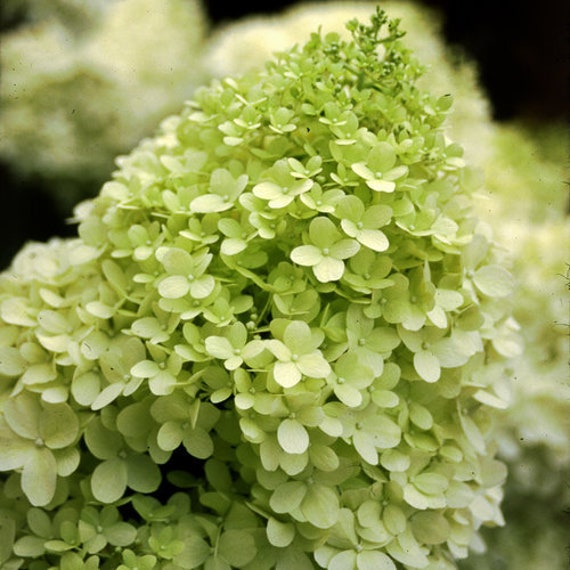Limelight Hydrangea: The Easytogrow Showstopping Shrub
Limelight Hydrangea: The Easy-to-Grow Showstopping Shrub
Limelight Hydrangea is a popular shrub for its large, showy blooms that can reach up to 12 inches in diameter. The flowers are a light green color when they first open, but they gradually turn to a deep pink or burgundy as the summer progresses. Limelight Hydrangeas are relatively easy to grow and care for, making them a good choice for even novice gardeners.
Main Content
- Planting and Care
Limelight Hydrangeas are best planted in full sun to partial shade. They prefer moist, well-drained soil. To plant a Limelight Hydrangea, dig a hole that is twice the width of the root ball. Backfill the hole with soil, tamping it down gently. Water the plant well and mulch around the base to help retain moisture.
Limelight Hydrangeas need regular watering, especially during the first year after planting. Fertilize them in the spring with a balanced fertilizer. In the fall, prune the plant to remove any dead or damaged branches.
- Pests and Diseases
Limelight Hydrangeas are relatively resistant to pests and diseases. However, they can be susceptible to aphids, scale, and powdery mildew. If you see any pests or diseases on your plant, treat them immediately with an appropriate insecticide or fungicide.
- Bloom Time
Limelight Hydrangeas typically bloom in late summer to early fall. The flowers last for several weeks, making them a great addition to any garden.
- Variety
There are several varieties of Limelight Hydrangeas available. The most common variety is 'Limelight', which has large, light green flowers that turn to a deep pink or burgundy as the summer progresses. There is also a dwarf variety called 'Little Lime', which only grows 3-5 feet tall.
Conclusion
Limelight Hydrangeas are a beautiful and easy-to-grow shrub that can add a touch of elegance to any garden. If you are looking for a showstopping shrub that will bloom all summer long, Limelight Hydrangea is a great choice.
Are you looking for a stunning and low-maintenance hydrangea to add to your garden? If so, you need to check out limelight hydrangeas! These beautiful plants are known for their enormous displays of pale green blossoms that transition to soft white, cream, and pink through fall. They are also cold-hardy and drought-tolerant, making them a great choice for gardeners in a variety of climates.
If you're interested in learning more about limelight hydrangeas, I recommend visiting . This website has a wealth of information about the plant, including its history, care requirements, and pest and disease resistance. You can also find photos and videos of limelight hydrangeas in bloom, so you can get a better idea of how they look in your garden.
FAQ of limelight hardy hydrangea
Question 1: What are the best conditions for limelight hydrangea?
Answer: Limelight hydrangeas prefer full sun in cold climates, but afternoon shade in warmer ones. They also need well-drained soils that do not remain soggy for any amount of time.
Question 2: How do you plant a limelight hydrangea?
Answer: To plant a limelight hydrangea, dig a hole twice the width of the root ball and roughly the same depth. Backfill the hole with soil halfway and pour water into the hole until it rises to the top. After it fully drains away, finish filling in the rest of the soil.
Question 3: When should I prune a limelight hydrangea?
Answer: Limelight hydrangeas should be pruned in early spring, before new growth begins. Prune back by one-third its total height to encourage new growth and blooms.
Question 4: What are some common problems with limelight hydrangeas?
Answer: Some common problems with limelight hydrangeas include:
- Leaf spot: This is a fungal disease that can cause leaves to develop brown spots. To prevent leaf spot, water the plant at the base and avoid getting water on the leaves.
- Pests: Limelight hydrangeas can be susceptible to pests such as aphids, spider mites, and scale. To control pests, spray the plant with insecticidal soap or neem oil.
- Winter damage: In cold climates, limelight hydrangeas may suffer winter damage. To protect the plant, mulch around the base with a layer of 2-3 inches of organic matter.
Question 5: How do I change the color of the blooms on my limelight hydrangea?
Answer: The color of the blooms on a limelight hydrangea is not affected by the soil pH. However, the color may fade over time. To keep the blooms looking their best, fertilize the plant in spring with a balanced fertilizer.
Image of limelight hardy hydrangea
5 different images of "limelight hardy hydrangea" from Pinterest:
- Image 1: A full-grown limelight hydrangea tree in full bloom. The flowers are a pale green color, but they will change to cream, white, and even pinks as the season progresses.

- Image 2: A close-up of the flowers of a limelight hydrangea. The flowers are large and round, with a slightly wavy edge.

- Image 3: A limelight hydrangea tree in the fall. The flowers have turned a beautiful shade of pink, and the leaves are starting to change color as well.

- Image 4: A limelight hydrangea in a garden setting. The tree is surrounded by other flowers, creating a beautiful and colorful display.

- Image 5: A limelight hydrangea in a pot. This is a great option for people who don't have a lot of space, or who want to be able to move the hydrangea around easily.

Post a Comment for "Limelight Hydrangea: The Easytogrow Showstopping Shrub"